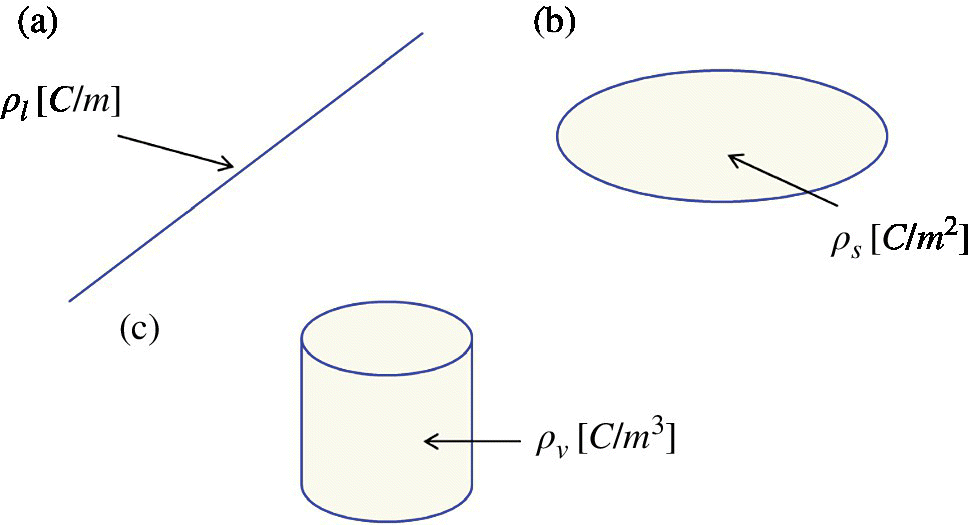13Static and Quasi‐Static Electric Fields
Modern theory of electromagnetics is based on a set of four fundamental relations known as Maxwell’s equations. These equations hold in any material, at any spatial location, and involve the time‐varying, coupled electric and magnetic fields.
When the fields are time‐invariant (static) Maxwell’s four equations separate into two uncoupled pairs, one for the electric field and one for the magnetic field. This allows us to study the electrostatics and magnetostatics separately.
13.1 Charge Distributions
The concept of electric charge is the basis for the study of electromagnetics. The electric charge can be either positive or negative, and exists in integer multiples of a charge of an electron (negative charge).
We often use the idealized model of an electric charge, called the point charge, where we assume that the charge is dimensionless (the charge is on a body whose dimensions are much smaller than other relevant dimensions).
In addition to a single point charge or to the discrete distribution of point charges, we will discuss continuous charge distributions: line, surface, and volume charge distributions. These distributions are shown in Figure 13.1.

Figure 13.1 Charge distributions: (a) line, (b) surface, (c) volume.
If the charge is distributed along a line we characterize the distribution by the line charge density.
The total charge contained ...
Get Foundations of Electromagnetic Compatibility with Practical Applications now with the O’Reilly learning platform.
O’Reilly members experience books, live events, courses curated by job role, and more from O’Reilly and nearly 200 top publishers.

